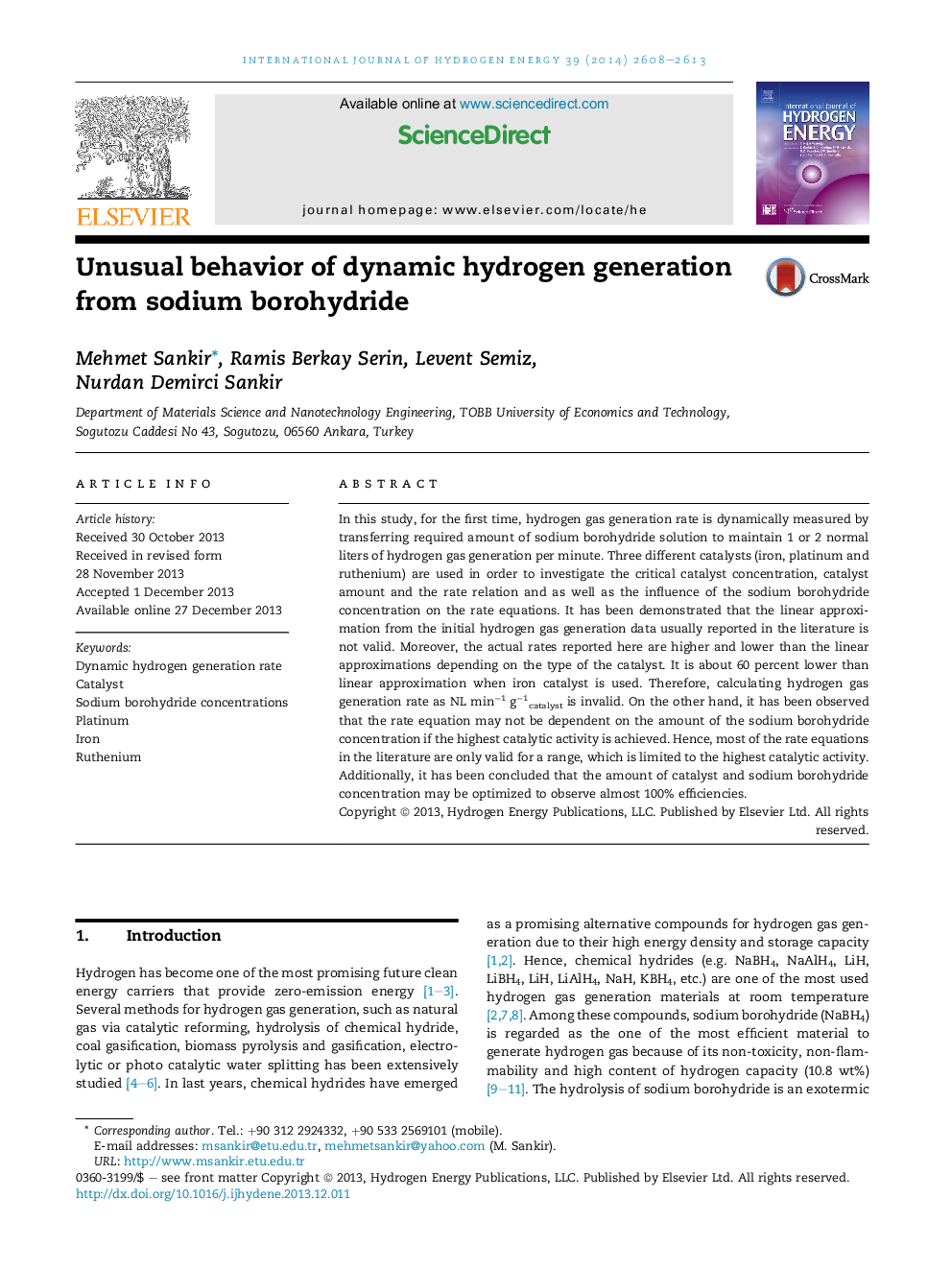| Article ID | Journal | Published Year | Pages | File Type |
|---|---|---|---|---|
| 7720394 | International Journal of Hydrogen Energy | 2014 | 6 Pages |
Abstract
In this study, for the first time, hydrogen gas generation rate is dynamically measured by transferring required amount of sodium borohydride solution to maintain 1 or 2 normal liters of hydrogen gas generation per minute. Three different catalysts (iron, platinum and ruthenium) are used in order to investigate the critical catalyst concentration, catalyst amount and the rate relation and as well as the influence of the sodium borohydride concentration on the rate equations. It has been demonstrated that the linear approximation from the initial hydrogen gas generation data usually reported in the literature is not valid. Moreover, the actual rates reported here are higher and lower than the linear approximations depending on the type of the catalyst. It is about 60 percent lower than linear approximation when iron catalyst is used. Therefore, calculating hydrogen gas generation rate as NLÂ minâ1Â gâ1catalyst is invalid. On the other hand, it has been observed that the rate equation may not be dependent on the amount of the sodium borohydride concentration if the highest catalytic activity is achieved. Hence, most of the rate equations in the literature are only valid for a range, which is limited to the highest catalytic activity. Additionally, it has been concluded that the amount of catalyst and sodium borohydride concentration may be optimized to observe almost 100% efficiencies.
Related Topics
Physical Sciences and Engineering
Chemistry
Electrochemistry
Authors
Mehmet Sankir, Ramis Berkay Serin, Levent Semiz, Nurdan Demirci Sankir,
